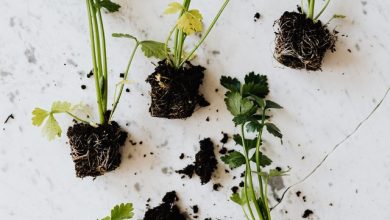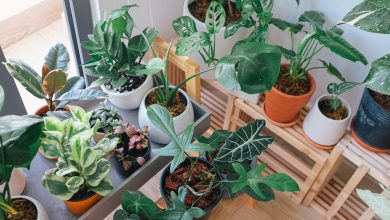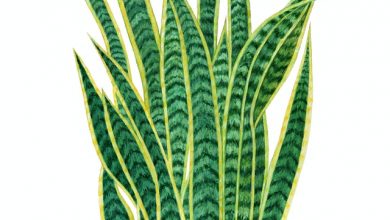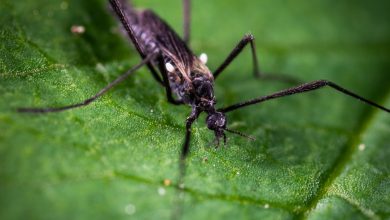Pothos Yellow Leaves
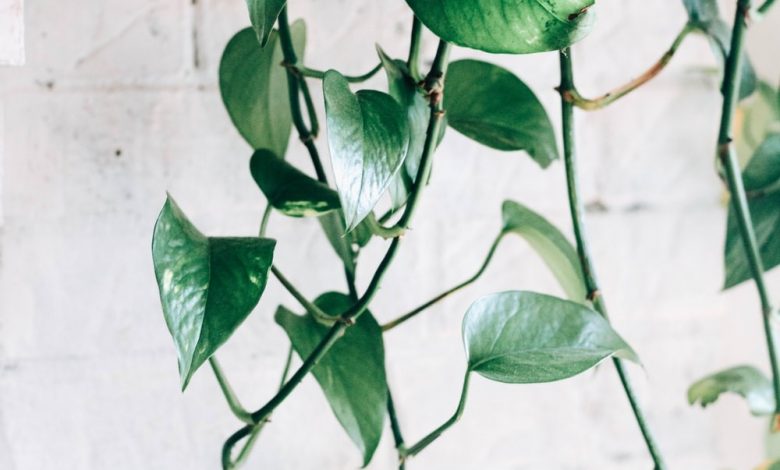
Pothos, otherwise known as Epipremnum aureum, marble queen, and golden pothos, is a member of the Araceae family. It’s native to the Society Islands of French Polynesia.
In the wild, the trailing vine of pothos can grow up to 66 feet, and the leaves change as the plant grows, turning from heart-shaped to feather-like. Indoor pothos doesn’t rise past four feet. Consequently, the trailing-leaf transformation doesn’t happen.
The plant is called devil’s vine or devil’s ivy because of its unique ability to remain green, even while in the dark, and how nearly impossible it is to kill. Consequently, pothos gets considered an invasive species in several regions other than its native French Polynesia.
Epipremnum aureum is a popular houseplant, as it’s easy to care for and adapts to a range of conditions. Although pothos is a flowering plant, it rarely flowers without hormonal supplements. As such, its popularity as a houseplant is for the beautiful property of the heart-shaped leaves.
Yellow Leaves in Pothos
The heart-shaped green leaves of devil’s ivy may sometimes turn yellow as an indication of one or more underlying issues with the plant. The following is a list of likely causes of yellowing leaves in pothos and the possible solutions.
Too Much Direct Sunlight
Like most houseplants, pothos requires an amount of sunlight to thrive, but overexposure to direct sunlight will cause the leaves to curl, burn, and begin to turn yellow.
The Solution
Pothos does best in low light. If you observe the leaves turning yellow, move the plant to a location with less light. You can also reduce the light intensity by hanging a sheer curtain over the windows if the site is too brightly lit and has no shade areas. Pothos will also grow under fluorescent light.
Over Fertilization and Under Fertilization
Too much fertilizer can lead to yellowing leaves, especially in unsuitable potting soils, as it builds up in the ground and causes root burn.
The Solution
In unfavorable soils, pothos requires moderate amounts of fertilizer to make up for essential nutrients that may be lacking. Apply a balanced house plant fertilizer once in two or three months; doing so will make up for any deficiencies in the soil, without becoming toxic.
If you suspect that over-fertilization is responsible for the yellowing leaves, flush the soil by pouring enough water to saturate the soil and flow out of the holes in the container’s bottom. Alternatively, you may choose to re-pot the plant into fresh earth.
Fluctuations in Temperature
Devil’s ivy grows best in moderate temperatures. Constantly changing temperature will eventually harm the plant and cause leaf yellowing.
The Solution
The ideal temperature for pothos is between 70 to 80 degrees Fahrenheit. Position the plant away from open windows that may let in cold drafts and avoid sudden spikes in temperature.
In the summer, when temperatures are warm enough for pothos to be outside, you may keep the plant out, but in a shaded area. Most house plants, including pothos, are intolerant of temperatures below 50 degrees Fahrenheit. Therefore, take the plant indoors before nightfall when temperatures drop.

Fungal Diseases
Fungal disease arises due to excessive humidity and frequent misting of the stem and leaves. Microbes use the droplets on the leaves as a channel to infect the plant.
The Solution
Mist pothos only in the morning so that the water evaporates before night. Droplets that don’t evaporate by nightfall will stay on the leaves overnight, giving fungi a better chance of getting into the plant.
Over-Watering
Pothos is intolerant of wet conditions. Too much water will cause the epiphytic roots to rot. The rotted roots are soft, moist, and blackened. They prevent the stem and the leaves from getting water and essential nutrients, leading to discolored leaves.
The Solution
An abundance of yellow leaves is often an indication of root rot. Root rot happens when the plant stands in water for too long and may be due to too much watering, poorly drained soil, or an unsuitable pot. Either one of these variables will result in wet soils that pothos doesn’t enjoy.
Watering
Water pothos sparingly. A proper watering schedule is to water the plant only when a finger dipped into the soil comes out dry.
It’s important to note that under watering can also cause yellow leaves, but this is easier to detect, as the leaves will show signs of withering before becoming yellow.
Soil
A well-draining soil is ideal for pothos, as it grants easy passage to water and permits air to the epiphytic roots of the devil’s vine. A combination of equal parts of potting soil and perlite or the same amounts of potting soil and cactus/succulent mix will serve well.
Potting
A pot with no drain holes or holes that have been blocked by the plant roots will strike out the benefits of infrequent watering and well-drained soil. Consequently, use containers that have holes underneath. Blocked outlets indicate that the plant has outgrown the pot and will need to get a bigger vase.
Repotting Pothos
Plants get new pots mainly because they’re outgrowing the current pot. But leaf yellowing from root rot and over fertilization are also reasons why you may need to re-pot the plant to halt the damage.
In normal circumstances, when the plant is healthy, it’s best to re-pot pothos a few days after you’ve watered it, to ensure that the plant is at its most vibrant.
You may re-pot the plant as soon as you suspect root rot or over fertilization, as watering the plant further will only worsen the situation. Follow these steps to re-pot Epipremnum aureum.
- Fill a new pot with quick-draining soil to the extent where the incoming plant sits at or slightly below the top.
- Place the plant on its side.
- Loosen the roots by squeezing on the sides and pressing on the bottom of the container.
- Slide the plant out of the pot to reveal the rootball.
- Press on the roots again, to loosen the rootball.
- Place the plant in the new container and fill the sides with soil.
- Topping with compost is optional.
These steps are for re-potting a healthy pothos. In plants suffering from root rot and over-fertilization, you’ll need to remove the damaged roots before transferring it to its new home. Hose down the roots of over-fertilized plants before moving it.
Note that it’s always best to re-pot pothos in the spring and summer, as the plant is in its growing season and better able to handle the strain arising from its transfer. The latest you should re-pot pothos is six weeks before winter, as the plant becomes dormant when it’s cold. Later than six weeks and the plant may be too sleepy to combat the strain of re-potting.

Other Problems of Pothos
Besides yellow leaves, Epipremnum aureum may also suffer curled leaves and stunted growth. Insect pests are sometimes an issue.
Curled Leaves
The heart-shaped green leaves of pothos may begin to bend downward. Several factors may be responsible for curling leaves in pothos including under-watering, temperature, disease, and pests.
Under Watering
Although pothos doesn’t require much water, extended periods without watering will cause the leaves to curl downward as the plant tries to preserve what moisture it has left in its system. Curling leaves resulting from under-watering can easily get remedied if you detect them quickly. A decent drenching should get your plant back on track.
Temperature
70 to 80 degrees Fahrenheit is the ideal temperature for devil’s ivy. The leaves may start to curl downward when exposed to higher temperatures.
Root Rot
As the roots rot, the plant becomes dehydrated, since it can no longer absorb water from the soil. It soon becomes a case of under watering brought on by over-watering.
Incorrect Lighting
Lighting plays a crucial role in plant development. A healthy plant will have flat green leaves. The devil’s vine is a low light house plant. Consequently, too much light will cause the leaves to curl away from the sun. Conversely, the plant will stretch in the direction of the nearest light source in a dimly lit room.
You can correct light problems by repositioning the plant. A south-facing window provides enough indirect light for pothos.
Insect Pests
Eliminate any insects you observe on your Epipremnum aureum immediately. Insects can suck sap from the petiole and leaves, causing the leaves to curl up.
As a preventive measure, you can use a cotton swab with rubbing alcohol to regularly wipe down the plant. Alternatively, neem oil is an organic but effective insect repellent that can combat and prevent insect infestations. Spray the oil on the stem and the leaves regularly to deter insects.
Stunted Growth
Ideally, devil’s ivy will grow to three and a half feet indoors. Stunted growth in pothos may be a result of one or more of the following.
- Unfavorable temperature
- Pests
- Insufficient light
- Nutrient deficiency
A balanced fertilizer once in two months will meet devil’s ivy’s nutrient requirements.
Toxicity in Pothos
Pothos is toxic to pets and humans. Consequently, keep the plant away from children and pets. You can plant it in a hanging basket, which will display the vines beautifully and keep the plant away from little children and pets.
